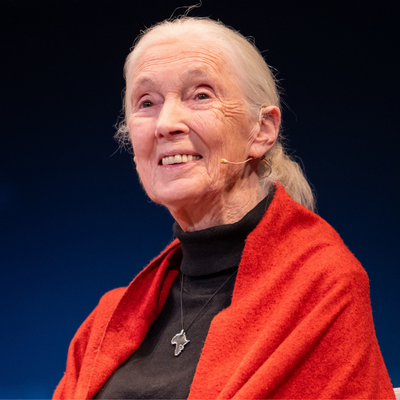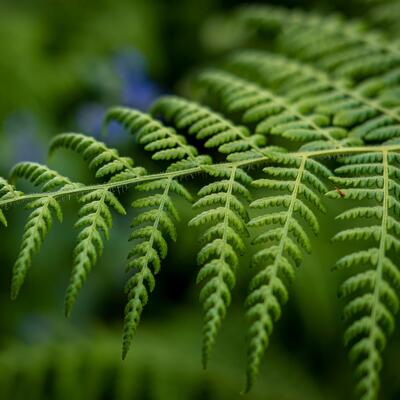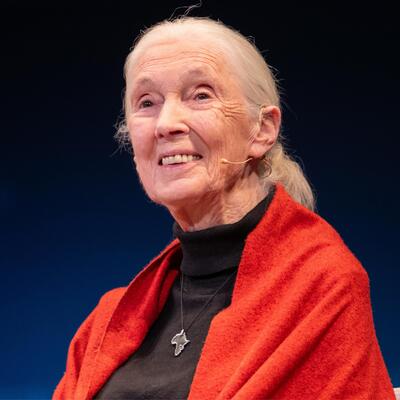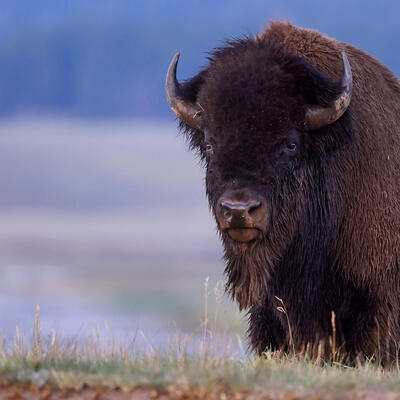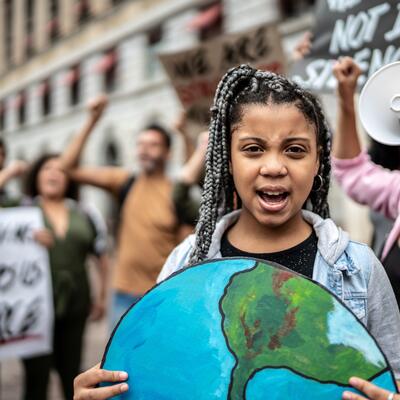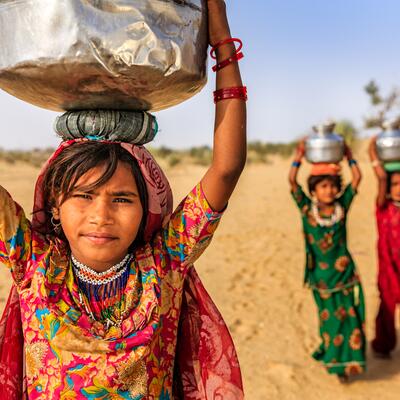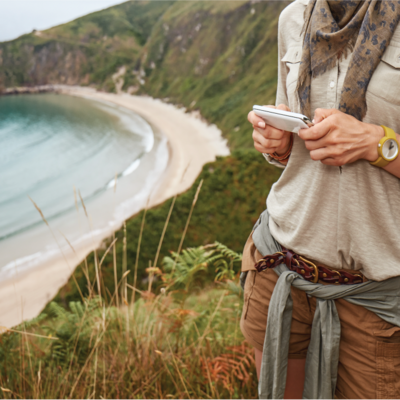
Naturally Wired: Getting Outside in the Digital Age
Guests
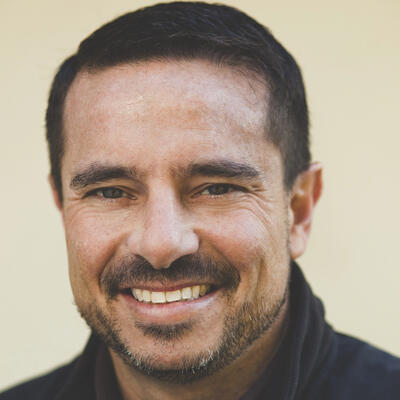
Phil Ginsburg
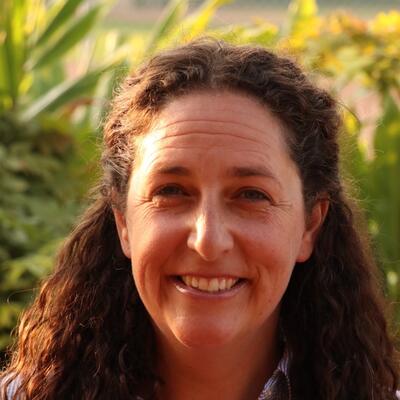
Rebecca Johnson
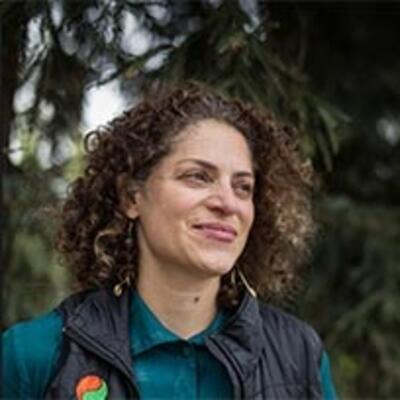
Nooshin Razani
Summary
What does it take to get people off their phones and into the outdoors? Research has shown the deleterious effects of electronics on weight, sleep, and cognitive development in children, who in 2018 spend four hours or more each day glued to screens. Other barriers like income and proximity to nature make access to the outdoors extremely challenging for some families. Meanwhile, doctors have started prescribing hikes over medications, and terms like “forest schools” and “unstructured playtime” are new buzzwords. So how do we encourage outdoor curiosity and conservation in a generation raised on screen time?
Related Links:
Citizen Science at the California Academy of Science
iNaturalist - A Community for Naturalists
Center for Nature and Health at UCSF Benioff Children’s Hospital
Full Transcript
Announcer: This is Climate One, changing the conversation about energy, the economy, and the environment.
What happens when people get off their phones and into the outdoors?
Nooshin Razani: Within a few minutes you’ll see improvement in heart rate and blood pressure... Around 20 minutes you’ll see improvements in attention span... After an hour you’ll see more physical activity... 90 minutes they've shown that depression goes down.
Announcer: But what about people who might not have easy access to the great outdoors?
Rebecca Johnson: It's not just by going to a National Park or somewhere really far away. It’s on your street across the street it’s wherever you are.
Announcer: And it’s not just about reconnecting with nature. It’s also about dis-connecting from distraction.
Phil Ginsburg: The impact to mental health, the impact on creativity, relationship building all these things happen easier in nature without a phone.
Announcer: Getting outside in the digital age. Up next on Climate One.
Announcer: What does it take to get people off their phones and into the outdoors? Climate One conversations – with oil companies and environmentalists, Republicans and Democrats – are recorded before a live audience, and hosted by Greg Dalton.
I’m Devon Strolovitch. In today’s modern world, many people – especially children – live disconnected from nature and may not understand the impacts of a changing climate.
Phil Ginsburg: Every child should have a nature-based experience every single day.
Phil Ginsburg is General Manager with the San Francisco Recreation and Parks Department, where he works to make the city’s park system more equitable and inviting to an increasingly urbanized population.
Rebecca Johnson: When my kids were little in the city we spent a lot of time in big open spaces in the city so they could just run and climb and no one would tell us not to.
Rebecca Johnson is Co-director of citizen science at the California Academy of Sciences, where she helps design programs that connect people to nature wherever they are.
Nooshin Razani: How do you raise children who love place and love the Earth and in the next sentence tell them about climate change?
Nooshin Razani is Director of the Center for Nature and Health at UCSF Benioff Children’s Hospital in Oakland, California, where she prescribes time outdoors to her pediatric patients and their families as preventive medicine.
Let’s listen as Greg welcomes all three to the Commonwealth Club stage for a conversation about reconnecting with the natural world.
Greg Dalton: Nooshin Razani, let’s begin with you. You talk in your fabulous TEDx talk in I think it was Nashville about the loneliness of motherhood and how you missed your mother and then you've looked to a solution. So tell us that story.
Nooshin Razani: I am a pediatrician by training and I was a pediatric infectious disease specialist. And I think that I was actually really arrogant about having kids I thought I knew everything. I also had four brothers that I kind of raised. And so I thought, you know, I have this I got this. And then I was living in a city and I had my kids and I think there's no level of expertise really that could prepare me for the overwhelming isolation of the experience. And we don't talk about it that much but it was like I was inside in four walls and I had two and now three little crying beings and actually much love to our city but everywhere we would go I actually had to fight their natural instincts. Like if they wanted to climb something or walk over something or even sometimes just be in the space as a child I had to rein that in. And it was like I was an enforcer of some sort to saying no all the time and I was really unhappy. And I think after a while I started noticing that when we were in natural spaces and especially when we were in natural spaces and had free time and I just like I stopped, I didn’t listen to everything that was telling them not to follow their natural instincts, things were just easier. And even though I have a huge and juicy and wonderful family I don't live near them they live in another country. And so even though I was away from my support system and in a city when I was in natural places I felt connected and I think, you know, that was for me a bit of a savior. And I actually changed my entire profession and I devoted myself to helping people get back into nature through that experience.
Greg Dalton: So from that you call it almost breakdown, nature was your prescription your salvation.
Nooshin Razani: Yes.
Greg Dalton: Phil Ginsburg, let's talk when you were a child growing up in suburban Philadelphia when you were upset you went to the backyard. Tell us about that place you went when you were -- emotions were overwhelming you as a child.
Phil Ginsburg: Yeah nature was always the place where I went for calm. We had this -- it wasn’t really in our backyard it was actually sort of a forested sort of border of our house and it was when I got in trouble for leaving wet towels on the bed or something else and I needed a little bit me time. I went to the same spot, there was a little spot in the woods that I just kind of hung out in. And it made me calm and then I could kind of come back and function and pick up the towels and all is good. And right near my house there was also this creek, Marion Creek where I used to go and this was at the time, you know, we probably all grew up in a time when being a child was less programmed and less structured. And Marion Creek was known for its crayfish and its turtles and much to my parents chagrin, I often brought them home. And we have this -- they indulged and I had this big I don’t know 20 gallon tank that they made me keep outside where I had about, you know, 10 of them, 10 turtles and 10 crayfishes as pets and it stank.
Greg Dalton: As every child should have, right. Rebecca Johnson, you also had a special place a cabin that you went to in the woods. Tell us about that place-based early connection to nature.
Rebecca Johnson: Yeah, my family I grew up in Southern California and my family had a small cabin up in the San Bernardino Mountains. And my family weren’t really campers I grew up in the suburbs. My mom and dad didn't camp but we would go to this cabin that my dad had inherited from his family and he had great childhood memories of being there and being outside. And we didn’t really have any, there was no schedule when we were there, right, we just got to be. And a lot of the times it was really just me and my brother outside while my parents were doing whatever else, so fixing the cabin mostly because it was quite old. And it was just a place that I could be outside in nature and turn over rocks and watch birds and learn about animals that I didn't see in the suburbs. I mean I grew up in a great little suburban community where we had a lot of access to open space that I didn't really appreciate until I left the city. So there was always nature around us and my parents encourage us mostly because we’re always encouraged to be outside not sitting inside to pay attention and to be curious and ask questions. And so I got to spend a lot of time in this place that was really special to me and my family and I have been fortunate to take my kids back there to just sit and be and watch the same birds or same kinds of birds. And now I know a little bit more so I can help them kind of understand that place a little more.
Greg Dalton: So you’re all parents who have teenagers grew up in a different era. There's a stereotype that young people are particularly glued to their devices these days and is that really the case. One of our producers went to the Esports Arena in Oakland to try and find out. Several nights a week, dozens of gamers gather to play games like Fortnite, Call of Duty and Super Smash Bros. We ask some of the gamers about their relationship with nature and how their screen time compares with their green time.
Male Speaker: My name is Brandon Shey [ph] and I’m from Newton, Mass. Because I grew up in like an urban area that was just outside Boston like if I were to go to the park I would literally be the only one there and, you know, I wouldn’t have anyone to play with or anything. Your friends are online and you talk to them online and whatnot. I do a lot of cycling I guess that would be like my connection with nature.
Male Speaker: I’m Verion Rall [ph] I’m from Piedmont Pines. I love going to National Parks on Yellowstone. My family lives on like kind of a mountainside so the location is we kind of _____ [00:08:48] because it’s just really beautiful there. I don’t know, I’m the kind of person who stargazes sometimes, I love nature.
Male Speaker: My name is Raymund Francisco and I’m actually from Boyle. I go to like yearly retreats sometimes haven’t gone camping this year but sometimes we used to go camping, you know, with friends and family. And then that’s when like, you know, no reception so you’re kind of taken away from technology because we forget, right, in the city we forget, oh yeah, nature is here, nature is beautiful. It’s there and it’s not always gonna be there if we don’t do something about it.
Male Speaker: My name is Onaguako Obioma [ph] and I’m from Hayward. Majority of us we do like spending our time in front of the screen. For me it’s kind of sad because I used to be like I’m like an outdoor person. Like as a kid I was always outdoor doing whatever I can. I went to the beach one time it was pretty relaxing, other than that, I just been swamped with work. So as like deep, deep nature, I guess you could say I’m somewhat off of it.
Greg Dalton: Those are voices from a Friday night at the Esports Arena in Oakland, California. We are aware that all of the voices were male in that segment. There were in fact no woman playing video games the evening that we visited there. So I’d like to get your reaction there's a lot in there, Phil Ginsburg, if I go to the park my friends aren't there, there’s a bit of loss there's some stargazers. What’s your reaction to that?
Phil Ginsburg: Oy is my reaction to that. So let’s start with the, you know, sort of some of the hard reality here, which is the generation of children that are growing up today is the most sedentary generation of kids in our history. It's the first generation that whose life expectancy is probably less than their parents and that stuff about screen time is very true. On average, kids are spending somewhere between five and eight hours a day on their screen and less than an hour a day outside. Not a great recipe. More optimistically, particularly here in the Bay Area we are blessed with incredible open space within city limits of San Francisco, 18% of our city is green space. 18%, that's pretty good and San Francisco is the first city in the United States of America where 100% of us live within a ten-minute walk of a park. So we have access and I think you know under two or three different mayors who've cared a great deal about this we've invested $500 to $600 million in our park system to try to make it more equitable, more welcoming. And I think we’re doing a pretty good job of that but we have a big culture shift to ensure that every child has the opportunity to enjoy nature every day. And that is what we should all be working on every child should have a nature-based experience every single day.
Greg Dalton: Not just go to a park one week in the summer sort of thing. Nooshin Razani you deal with an underserved population in Oakland that doesn't have the access and has some of the same generational thing you still talked about, sedentary screens, etc. So talk about reaching that underserved population at your work.
Nooshin Razani: I think that it’s important to clarify that while there is absolutely a difference in who has access to nature and sadly nature is like many other commodities in our society it’s inequitably distributed that does not reflect whether or not people want to be in nature. And we've spent a lot of time talking to and studying and being with the patient served that Children's Hospital Oakland who happened to the majority are on public insurance such as a marker of being near federal poverty line. And definitely people still want to be in nature and so lack of access is not a marker for whether or not people want nature. And so I think when you're talking about how to make people have that desire, which I think is what you’re kind of getting to, I usually try to start with folks where their at. And so in a family that has multiple stressors whether if you're living in poverty, you may be working several jobs and this actually applies to all of us. There is so much to do in the modern day that it's really hard to come out a parent and add one more thing on. And so I really don't take that approach that, oh you have to do X, Y and Z in order to maximize your health. I really try to come from a place of you have the right to have this thing in your life that will help you cope with the rest of your life. And you have the right to rest you have the right to spend quality time with each other and let me see if I can help you find that. And so that’s the approach we take. I think that your point about equity is an important one and so I hope that physicians can join in with people like Phil in parks districts to also advocate for the fact that, you know, if every child is going have a nature experience then every child needs to have a tree near them. And so we can’t have all the trees and all the green in one part of town and not in another part of town but we cannot advocate for more equitable distribution of nature.
Announcer: You’re listening to a Climate One conversation about getting outside in the digital age. Coming up, Greg Dalton asks how engaging with nature can help us better understand the impacts of a changing climate (on our own lives).
Rebecca Johnson: People if they’re paying attention to a specific place and they go back to that place and they start paying attention a little bit more and in a different way, they can start to recognize change and witness the changes that we’re all seeing.
Announcer: That’s up next, when Climate One continues.
Announcer: We continue now with Climate One. Greg Dalton is talking about reconnecting with nature in the digital age with Phil Ginsburg, General Manager with the San Francisco Recreation and Parks Department. Nooshin Razani, Director of the Center for Nature and Health at UCSF Benioff Children’s Hospital in Oakland. And Rebecca Johnson, Co-director of citizen science at the California Academy of Sciences.
Here’s your host, Greg Dalton.
Greg Dalton: Rebecca Johnson you work for a program iNaturalist, you know, citizen science where you're trying getting out into nature and using screens as tools of engagement. It's not black or white, good or bad. Tell us about screens as tools of engagement and learning in nature.
Rebecca Johnson: So through my work at the California Academy of Sciences where I co-direct citizen science, we design programs and try to work with lots of partners all over the city and the state and the world to figure out ways to connect people to nature and at the same time help them by using this platform called iNaturalist, an app and a website, to make biodiversity observations. And so those observations like speaking as a scientist, those observations are really important for understanding and doing really good science and furthering conservation but at the same time, this tool is a way to connect people to the natural world. And sometimes that sounds a little counterintuitive but people are inherently curious. And having this app and tool that encourages them to be curious and take pictures of what they're seeing whether or not they know what it is and knowing that there’s kind of a space where you can take a picture of a plant and you might not know where it is. But if you take a good enough picture the app and then people online, a community of people, will help you learn what it is, is a way to foster curiosity and at the same time use that tool that can sometimes be really isolating but to connect you to a community of people. And all of our events and the things that run use this app as a tool but it also has a huge in-person community building. There’s a part of it that is in-person community building. So we bring people together in places that matter to them to help discover and document biodiversity together. And so we bring people together that may not have met but share a love of usually of a place and so they can discover and explore together. It might sometimes be through a screen but usually the screen is kind of helping the experience it's a little different than just being isolated by the phone in between them.
Greg Dalton: And how are you using that to document climate change? Are you seeing climate change?
Rebecca Johnson: Yeah, I mean this, so the app is you can use it to take pictures but all of this data are shared. So basically when you take a picture of a let’s say of a plant and it knows where you are, who you are and when you took that picture and it’s shared online with iNaturalist. And that’s a data point that’s a species occurrence record. And so on iNaturalist now, there are about 16 million observations that have been shared from all over the world and together those make up a picture of biodiversity. And so we can use those data to look at where species are found is changing. And so individual people can take a picture that they might be taking a picture because they want to know what that spider is that they see on the sidewalk. And they're not really interested in conservation or climate change but that piece of information can help us understand how where that spider is found now compare as to where it was found in the past and where it might be found in the future. So there are lots of different examples of you can use these type of data to understand climate change. And sometimes more importantly is that people if they’re paying attention to a specific place and they go back to that place and they start paying attention a little bit more and in a different way, they can start to recognize change and witness the changes that we’re seeing. And they have a record so they can remember and they can look back and it really helps everyone I think kind of bear witness to the changes that we’re seeing.
Greg Dalton: Nooshin Razani, there's a professor at the University of Utah named David Strayer, you referred me to his work I watched his TEDx talk. He’s done research about human brains 20 minutes and science. So tell us about his research and what he's found with people in nature with their phone and without their phone.
Nooshin Razani: Sure. Well, I think in general and this is both the work of David Strayer and many others. If you take an urban person and you put them in the forest within a few minutes you’ll see improvement in stress. And so you’ll see improvements in cortisol in heart rate in blood pressure. Once you get to around 20 minutes you’ll see improvements in attention span after an hour you’ll see more physical activity and then 90 minutes they've shown that depression goes down. And then when you spend even longer time in nature and this is one of the studies that Dr. Strayer did where he actually hooked people up to EEG machines while they were backpacking in the wilderness they had no technology at all.
Greg Dalton: Except the EEG machine.
Nooshin Razani: That’s so true. But what he found is that there seems to around day three there's a little bit of a tipping point where your creativity is really maximized and your cognitive ability goes up. He has also done another study where he looked at the changes in brain waves in nature and then what if you go into nature with your phone. And I’m really sorry to say I mean we were just discussing that there are different ways to interact with your phone, but he did show that some of the benefit went away with the phone. And I think as a pediatrician one thing that I'm also and you brought this up, concerned about is parents and parental distraction. And the fact that the emotional attachment that happens between a parent and a child when a parent actually looks a child in the eye and mirrors their facial expression that whole interaction is key to the emotional development of the child. And so when both parties are fixated on the screen instead of each other there is a loss of actually what is not, you know, what is not optional what is actually essential to the development of a human being, which is having your parent mirror your emotions. And so I think except for iNaturalist, we need to be aware of our, you know, of the fact that we might be missing out on really enjoying nature together if we’re doing it through a screen, yeah.
Greg Dalton: Phil Ginsburg, there are juveniles on probation that go to Yosemite. Tell us about that program.
Phil Ginsburg: We run a really, really great program called the Teen Outdoor Experience. It's a multi-agency partnership, but we manage a property near Hetch Hetchy called Camp Mather, maybe some of you have been there. It is a place where there is no cell service and there is no Wi-Fi, think about that for just a second and it is paradise. And you know picking up on Nooshin’s you know, apt remark about the equitable distribution of opportunities like that it is historically not been a place where we have seen that many people of color and that many people from underserved communities. It's beloved among much of San Francisco but we've made a concerted effort to give kids who don't know about it or wouldn't normally have a chance to get up there to get up there. So the program works with kids who touch our juvenile probation system and it involves the Juvenile Probation Department, the Police Department, Department of Children, Youth and Family and my staff and we bring up every year about 70 kids for about five days. And what's amazing is that this is a population that probably wouldn't may not flinch at a gunshot that they hear in the city that are used to concrete and asphalt have seen all kinds of awful stuff that doesn't really scare them very much. And you bring them up to the woods and they just become kids again. They're scared of the dark they're scared of water they’re scared of animal sounds. They have trouble understanding why you can't have a bag of Cheetos in your tent in the woods and a couple had to learn the hard way. And to see this group of kids up there you literally watch this population become kids again. And it speaks to everything anecdotally I’m just relaying everything that Nooshin has evidence about the impact to mental health, the impact on creativity, relationship building all these things happen easier in nature without a phone.
Greg Dalton: If you’re just joining us we’re talking about connecting to nature at Climate One. Our guests, Phil Ginsburg, General Manager of the Recreation and Parks Department in San Francisco. Nooshin Razani, Director of the Center for Nature and Health at the Children's Hospital in Oakland, California. And Rebecca Johnson, Citizen Science lead at the California Academy of Sciences. I'm Greg Dalton. Nooshin Razani, you have a son who is 13 years old who has a YouTube program or channel I’m not sure if I’m saying that right, making an old guy mistake. Tell us about that.
Nooshin Razani: So I raised my kids loving nature and I realized that that has consequences because everything that they're hearing about is that nature is in trouble, right. And so And I think what I've realized around the time that my oldest turn 13 is that if that energy doesn't get channeled into something productive and powerful it will become anxious and sad and withdrawn and not active. And so he wanted to make a YouTube channel, it’s called Movies with Mike One, let me just give a little shout out. But it’s for climate change and he does little challenges like he did, am I supposed to talk about this, three days without plastic. And I think what’s just beautiful about it is
Greg Dalton: Three days without touching plastic?
Nooshin Razani: Well, I mean he tried and we took a picture of our trash before and after and there was still like there's still plastic in our trash.
Greg Dalton: But I’ve looked at it he brushes his teeth not with a toothbrush brushing his teeth with like a metal bar or something.
Nooshin Razani: No, it was a stick.
Greg Dalton: Okay.
Nooshin Razani: But it was so humbling it was impossible to run a family I mean it was really hard to not use plastic. But I think the message here is like it doesn't really matter how you engage with climate change if you’re youth but just that you do and that you know that you have a voice and a role in a way better voice than all of us. And not only that but like we’re all behind you and if you choose technology to do that, great, even though I told them not to be on technology, you know, it is the tool that you have so I’m proud of him. And I’m proud of all the youth just for being alive in this day and age and for any creative energy that you bring to climate change that’s, you know, facing all of us.
Greg Dalton: And the youth are really driving a lot of the politics in this country right now around climate. The Sunrise Movement, children are in federal court suing the government to do more. But Nooshin, I wanna ask you, lot of people struggle with how much to tell children. I remember some eighth-graders coming to me and they did a research project and they're very prepared and they looked at me and I looked at them and they look at me as an authority figure. I didn’t know how much to tell them because I think it's kind of dark but so, you know, how do you talk to a 10-year-old versus a 15-year-old versus someone younger? How do you calibrate what you tell them?
Nooshin Razani: I’ve been thinking about this topic a lot and I've actually been drawing from the research that's done on trauma. There's been research done after 9/11 and after really huge events on how to talk to kids about something very traumatic. Because I don't think we should take it lightly that we’re telling children not only that we foresee the entire change of ecosystem but also that we don't really know what to do about it. I think that we have to do that in a developmentally appropriate way. What that research around trauma shows is that children do best when they think that they’re part of something and when they have social support and when they know their elders are doing what they can and that they and have a story to tell themselves about what's happening. So I think for children 0 to 5, you have to recognize that there’s very little separation between the external world and internal world and their relationship to a tree or an animal is one of intimate love. So you really have to talk about the death of that animal in a way that recognizes that you're telling them something they love will be dying. As kids get older I think you have to progressively give them more leadership in it. But just to wrap it up with drawing from the literature on trauma, I think the really important thing is to not say the world is ending and it’s up to you to change it. I think like because you’re five and you have no power, right. I think the thing to say is, yes, what you've heard is true and what you see is true and my generation is going to do every single thing that we can but then we actually have to do everything that we can. And what we don’t get to will be up to you and if you have any ideas I’ll try my best to follow you and your lead. But to not like leave it up to them or not say the world is ending so you should recycle. Like I mean it doesn’t make sense.
Greg Dalton: Rebecca Johnson, talking about participation in something bigger themselves. Tell us about the City Nature Challenge, which is a bioblitz is going to connect people from all over.
Rebecca Johnson: First of all I completely agree with Nooshin because I’m in this kind of environmental education role I mean I’m a scientist and an educator. I hear this all the time is that people are seeing all the work I do must be with children because children are the only ones who can do citizen science and the only ones who can be connected to nature. And even when I talk with adults who are out there with me making observations they’ll say it’s so great that you work with kids because they’re really the hope. I’m like, no, we’re actually the hope I mean we’re the adults here like who can call their supervisor their congressperson like me not my six-year old or my seven-year old. So I really appreciate this and I feel like this all the time it drives me, it’s one of my biggest pet peeves about this work and the world that we’re in. But the City Nature Challenge is an amazing endeavor that the California Academy of Sciences and the Los Angeles County Natural History Museum lead and it's an urban nature or a city in metro area biodiversity documentation contest which is a lot of words but really it’s a contest to see which city in metro area can document as much nature, the most nature over --
Phil Ginsburg: Beat L.A.
Rebecca Johnson: Beat L.A. So it started out the first year was in 2016 it was just San Francisco versus L.A. we worked together with our colleague Lila Higgins at L.A. County and President Obama had announced Citizen Science Day. So we thought what should we do and we thought well we could just see which city can make the most _____ [00:35:22] observations like that would be great. Then we did it for a little bit longer but together our two cities made 10,000 observations of plants and animals over like five or seven days. And we talked a lot on social media with like the beat L.A. hashtag. So the next year a lot of other cities wanted to join so the next year it was 16 cities across the U.S. And then last year it was almost 70 cities around the world. Hats off really to Lila and Alison who are the main organizers. They have, you know, multiple conference calls with multiple partners to get everyone on the same page because the most amazing thing about this is its, you know, the academy and the Natural History Museum working together with all these local partners who work in their cities and build partnerships that are meaningful in their place. And they say here are the basic things you have to do but really do what works for you. And by doing that, you know, you can have 17,000 people making nature observations in cities and make 400,000 observations over four days. And so for us this is a way to kind of get that like competition that the best that our work doesn't really have a competitive aspects but this is a way to get a lot of people engage in the nature that they see all around them. And it's not just by going to a National Park or somewhere really far away. It’s on your street across the street it’s wherever you are.
Phil Ginsburg: That’s a super important point which is nature is not about the once a year trip to Yosemite or to glacier. Nature is in your city it’s in your backyard it’s where we are and that's something that we really focus on here locally. Not as competitive as the bioblitz but I want to plug one another sort of cause for optimism, which is San Francisco is one of seven cities nationally participating in a sort of national effort to connect kids with nature. And so we have the San Francisco Children and Nature initiative, which involves not just the city and county but the school district about 25 nonprofits. The Presidio the Academy is involved, all these organizations working together and the toughest thing about change is getting different institutions to figure out how to work together to fulfill that mission statement of ensuring that every child has a nature-based experience every day. And one of the really interesting more interesting initiatives that this collaborative is focusing on right now getting to nature where you're at is we’re working with childcare providers. And there are some childcare providers that are very blessed to be near Golden Gate Park or near McLaren Park that have really easy access to nature. And then there are some in neighborhoods like the Tenderloin or the Excelsior or that are kind of landlocked and it might be sort of a basement kind of unit where a couple of people are watching eight or nine kids. And we've gone out and surveyed all of our sort of 0 to 5 childcare providers in San Francisco and those that don’t have easy nature access. One by one we are working on bringing nature to those facilities. So with tree stumps and leaves and branches so we’re trying to bring nature there that's just one of the initiatives that this is doing. But there is some cause for optimism this a real, there’s a real policy focus now. I mean again as Nooshin talked about the antidote to trauma antidote to mental health challenges that general idea of being connected to nature rather than connected to the Internet. And so we’re starting to see both locally and nationally much more of a policy push towards kind of making this happen.
Rebecca Johnson: It’s really about the people and connecting to people and finding ways to build a community around nature and nature connection for everyone – everyone who lives in the city, everyone who lives anywhere.
Announcer: That’s up next, when Climate One continues.
Announcer: You’re listening to Climate One. Greg Dalton is talking about getting outside in the digital age with Phil Ginsburg, General Manager with the San Francisco Recreation and Parks Department. Nooshin Razani, Director of the Center for Nature and Health at UCSF Benioff Children’s Hospital. And Rebecca Johnson, Co-director of citizen science at the California Academy of Sciences.
Here’s Greg.
Greg Dalton: Before we go to our audience questions, Phil Ginsburg I want to talk about what's being done to make parks hip and cool these days. Millennials are a generation that’s, you know, golf is thinking about making the hole bigger so the game moves faster, right. What are you doing with parks whether it's BMX or a ropes course what are you doing to make parks more --
Phil Ginsburg: Well nice lead-in, BMX and ropes courses. McLaren Park now has a great BMX bike course. We’re putting a ropes course in McLaren, you know, skateboarding is actually I think it's the second most popular physical activity among kids under the age of 21. So, you know, you gotta meet people where they're at. I think what's amazing about our park system is it is both cool and hip. It is also a place of reflection and really our 225 parks around the city can accommodate everyone and everyone's values. And it does tie into the nature conversation because there's a lot of activities that happen in parks whether in all honesty, whether it is soccer or a team sports or it is riding a bike or it's a museum or it's a concert that actually help welcome people into nature, right, they’re gateways. And so you come to Golden Gate Park for outside land you stay for the botanical garden or you stay for a walk along the new Oak Woodlands trails. And so I think we have to be open to creative strategies and whether that you know might mean geocaching or something, it could mean something that involves some technology of getting people outside in community in these shared experiences and then the nature follows.
Greg Dalton: Tell us about the treasure hunt.
Phil Ginsburg: The treasure hunt. How many people here know about Byron Preiss and the treasure hunt. Byron Preiss was a children's author who, this goes back actually two decades, apparently buried a key in a casque in parks all across the country and then published a book of images art that accompanied verse that were the clues to where these casques were buried. And the key actually unlocks a safe deposit box with actually very valuable jewels. So the story goes. Only three of the 14 casques have been found Mr. Preiss, sadly, I think died in a car accident. So he's not around to tell anybody where they are. And so there is one rumored to be in San Francisco and it was this was on the Travel Channel about six months ago and all of a sudden made all these request for people who wanted to dig for treasure in our park system which creates a kind of an interesting dilemma for a land manager. And we actually kind of leaned into it and said, sure, we want to do it responsibly we don’t want to hurt nature. We don't want to dig up irrigation systems and things like that so you have to be accompanied by a treasure ranger or a treasure gardener and you can dig away. So it spawned this really, kind of kooky quirky way of exploring our parks. There was a rumor just last week that it'd been found, but it apparently was a fraud where somebody flew here from I think from France with a scheme and a fake casque. My job is if you watch Park and Rec -- it is the sitcom, but it does lead to geocaching which is actually quite popular which are these, you know, GIS sort of coded little marks that people place all around parks and that is a true way of using technology collaboratively with your kids of exploring nature.
Greg Dalton: We’re gonna go to audience questions. Welcome to Climate One.
Female Participant: Hi. This question is for Mr. Ginsburg. So I found your work with the youth at Camp Mather very interesting. Did you see any long-term benefits after they spent such a long period in nature?
Phil Ginsburg: Well the benefits for us are we were able to engage kids in our system that actually have come back year after year. They come back the second year as a pure leader and several kids that have been in that program now actually work for us. So, you know, we weren’t really collecting data on these kids and maybe at some point we should figure out a way to do that. But just the mere fact that we have kids who are still in our system and are now pure leaders and camp counselors is quite good. We have one other program that I think is worth mentioning a program called Greenagers where we work with teenagers in the Bayview and in Chinatown and they are with us nine months a year, three Saturdays a month and it's an environmental education and leadership development program and those kids also become stewards. I mean I think Rebecca and Nooshin talked about how do we get us all but how do we get our next generation to kind of sort of care about the earth and really have a vested stake in making sure that we have nature and we have parks. And rather than telling kids what they can't do I think we've done a pretty decent job of giving kids an opportunity to learn and grow and actually work in nature.
Greg Dalton: Welcome to Climate One.
Female Participant: Hello. So the earth is always been a changing thing, you know, for centuries it’s always changing. It never stays the same. I think that’s something that's really interesting. But when things like climate come up there is always these issues and I guess this is vague, but this is kind of for all three of you, what would be some things that we want to keep the same like as our usage of technology and also balancing it out with like nature what you guys were talking about.
Phil Ginsburg: I could take a stab at the way that technology is actually helping us in water conservation. We now use something called the evapo sensors which are, you know, this is basically an Internet 2.0 technology that is actually able to measure the water content in soil so that we can irrigate much more precisely. That's an example of technology being used to help us conserve. And there are probably a few other examples of that but I do think that we have to be open to, you know, building design changes irrigation techniques change, land management, you know, techniques change with technology. And we have to be open to that as long as we understand what our values are, right. And our values are to try to conserve natural resources to try to respond to some of the impacts of climate change and again in this era of, you know, unfortunately a very sedentary disconnected generation giving the next generation of kids a reason to be outside to form a community. And I guess kids and parents I mean what Nooshin said about you have to be there to kind of look at your child, I mean that really resonated with me. Because I have a busy job and I spend way too much time on my phone even though I love nature and I’m out in it all the time. I think we have to get back to using our park system to create community. And I do think we should be open to ways that technology invites us to do that.
Rebecca Johnson: I would just add that, you know, even though the work that we do on my team is we use an app and we use technology. I mean like Phil said, it’s all about community. I mean I don’t think I will be in this job or doing this work or care about it nearly as much as if it was just about the technology. I mean it’s really about the people and connecting to people and finding ways to build a community around nature and nature connection for everyone. Everyone who lives in the city, everyone who lives anywhere and helping them use technology to learn more about the nature around them. And to help kind of collectively generate the data that we all need at the scale like global scales to help solve these problems and help understand how biodiversity is changing. We have global data about climate and a lot of most other variables but biodiversity data is really, really hard to get at that scale. And the only way we can do that is that people everywhere make and share observations. And then the flip like other benefit is that then they’re more connected to nature and hopefully through the work that we do can be more connected to each other wherever they live.
Female Participant: So I know that spending a lot of time on screens can be bad for a growing brain which my dad tells me a lot. But can Ms. Razani elaborate on what you said about seeing positive aspects to screen time and how that connects to knowing how much time is spent on screens and how much time to spend outside.
Nooshin Razani: Yeah, so there was a large national study where they look at screen time in kids and adolescents. And what they found is that there's a huge uptick in number of hours spent on screens at around middle school. And for kids age 14 to 17 sadly, you know, every hour that you’re on the screen does increase your risk of anxiety or depression. And so I think it's real it does seem that those kids that spend more than seven hours a day, and that's a weekday, on screens tend to have like double the risk of anxiety or depression which may be that kids who are depressed need screens more than other kids. But I would say that going back in the beginning when I was talking about basically how to live as a human you need 8 to 12 hours of sleep if you’re a teenager it can be up to 12. You need to exercise I mean I can’t even believe that I’m settling for an hour a day but I would settle for an hour a day. And I tell people that you need to be out of doors in the sunshine for an hour a day. And if you think about the human animal, it’s like the only animal that we allow, to only be allowed outside for one hour a day and we find that acceptable. But I think you need to be outside an hour a day, you need to have physical activity and then you should be eating dinner with your family. There should be screen-free zones and screen-free times for families to interact with no screen. And then, you know, in terms of what to do online, I think there is some data that some of the social networking stuff is more correlated with anxiety and I don't want to speak to that fully. But like instinctively what I think is like when I see my kids creating something or generating content or if they can get good enough to code or actually be in a position of power when they're using the technology as opposed to just a consumer, I feel like that would be better for their mental health. I hope that was some guidelines.
Greg Dalton: Let’s go to our next question. Welcome.
Female Participant: Hi. I’m Scarlett I’m a high school student as well. And I was wondering because there are so much information these days out and I mean me personally I try and stay updated with all the recent news with climate change and different scientific advancements in those fields. I was wondering maybe for you guys what are the best ways to stay like up to date with all of the information and find the best ways that we can reduce our waste or just be better citizens in that way.
Greg Dalton: Rebecca Johnson.
Rebecca Johnson: Yeah, I would say there is so much information out there and I’m sure I don’t have to tell all of you that. I have found actually some of the best science communicators around climate are more on Twitter. And so I think there’s this amazing community, especially female scientists who are working in climate change. Jacquelyn Gill, there are just like -- you start searching, they are communicating science so beautifully and so powerfully and are really honest about what we need to do and connecting it to the kind of science that they do. And so I think that's where I would look to kind of curate it, I mean, it’s Twitter so you have to curate it but I think that is where I’d go to find like hope and inspiration and also the real science that’s happening right now.
Nooshin Razani: And I think the most important thing is to not disengage. I mean really anything you do that's engaged is good. And remember, you are nature so taking care of yourself is part of taking care of nature.
Greg Dalton: Last question.
Female Participant: So based on the recent research of the effects of nature on the mental health. Do you believe that psychologists will begin to use nature more as a treatment for mental health, specifically depression in teenagers?
Greg Dalton: Doctor Razani.
Nooshin Razani: Well, we’re trying to do randomize trial about that right now. I think first of all eco-psychologists have been doing that for a long time and the medical field is just waking up to that. And it's never going to take the place of an actual therapist because therapy is its own art and its own discipline. But there are people right now who are trying to figure out how much nature how often do you need it to help with anxiety and depression.
Announcer: Greg Dalton has been talking about getting outside in the digital age with Nooshin Razani, Director of the Center for Nature and Health at UCSF Benioff Children’s Hospital in Oakland. Rebecca Johnson, Co-director of Citizen Science at the California Academy of Sciences. And Phil Ginsburg, General Manager with the San Francisco Recreation and Parks Department.
To hear all our Climate One conversations, subscribe to our podcast at our website: climateone.org, where you’ll also find photos, video clips and more. If you like the program, please let us know by writing a review on iTunes, or wherever you get your podcasts. And join us next time for another conversation about energy, the economy, and the environment.
Greg Dalton: Climate One is a special project of The Commonwealth Club of California. Kelli Pennington directs our audience engagement. Tyler Reed is our producer. The audio engineers are Mark Kirchner and Justin Norton. Anny Celsi and Devon Strolovitch edit the show. I’m Greg Dalton, the executive producer and host. The Commonwealth Club CEO is Dr. Gloria Duffy.
Climate One is presented in association with KQED Public Radio.
